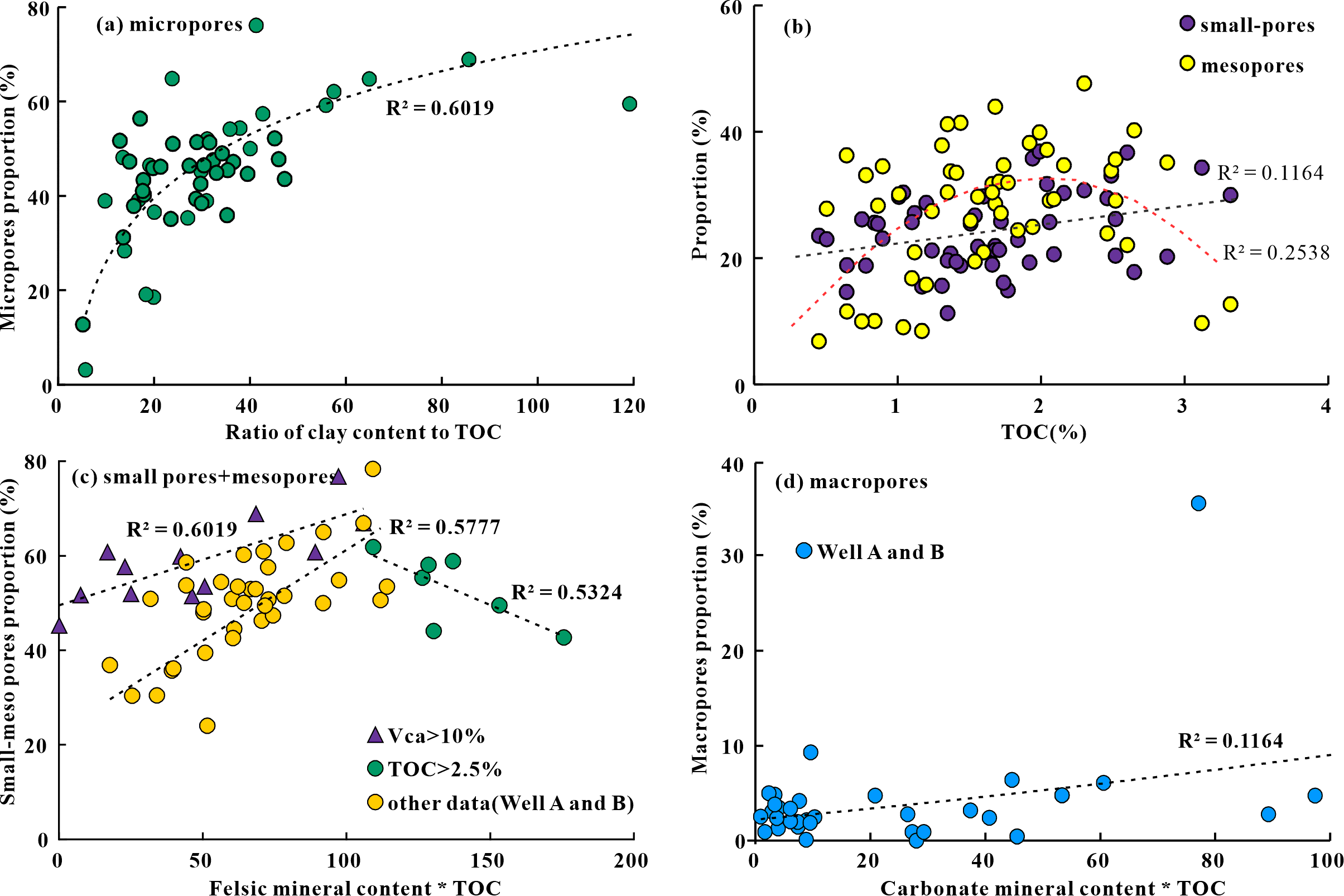Shale components affect organic–inorganic diagenesis, control the formation and evolution of pore structure, and lead to heterogeneity of shale reservoirs. Therefore, revealing the coupling control of shale components on the porosity and pore structure is crucial for selecting the dominant lithofacies. In this study, the lacustrine shale with medium maturity in the first member of the Qingshankou Formation (Qing1 Member) in the Changling Sag, southern Songliao Basin, China, was analyzed. Using pressurized sealed original shale samples and 2-D nuclear magnetic resonance (2D-NMR) analysis, the effective porosity of shale was accurately determined. The pore structure was characterized via experiments such as low-temperature nitrogen adsorption, NMR, and scanning electron microscope (SEM) analyses. In addition, the joint influences of the shale rock components, sedimentary structure, and maturity on the porosity and pore structure were investigated. Finally, the favorable reservoirs in the lacustrine shale with medium maturity and their formation conditions were identified.

Fig 1.The correlation between the proportion of pores within different intervals and rock components in the Qing1 Member in the Changling Sag. (a) presents the correlation of micropores proportion with the ratio of clay mineral content to TOC; (b) presents the correlation of small-pores proportion and mesopores proportion with the TOC; (c) presents the correlation between small-meso pores proportion and the product of the felsic mineral content and TOC; (d) presents the correlation between macropores proportion and the product of the carbonate mineral content and TOC. The proportion of micropores (<30nm), small-pores (30-100 nm), mesopores (100-1000nm), and micropores (>1000nm) in this Figure were determined by NMR derived PSD according to Lu's pores classification scheme.
Studies have shown that for lacustrine shale with medium maturity: (1) a moderate total organic carbon (TOC) content (between 1% and 2.5%) is a key factor for improving the effective porosity and the proportions of mesopores (100–1000 nm) and small-pores (30–100 nm). This is related to the generation of organic acids and the cracking of organic matter into pores. An excessive TOC content can lead to increased plasticity of the rock and filling of the pores by bitumen. (2) The porosity and pore structure are controlled by the organic matter and inorganic minerals as well as sedimentary structure. Organic matter has dual impacts on the porosity improvement related to clay minerals, promotion of clay conversion and filling of clay-related pores, and the ratio of the clay content to the TOC (Vsh/TOC) can reflect the degree of influence of organic matter, the greater the Vsh/TOC ratio is, the greater the effective porosity and proportion of micropores are. (3) Organic matter and felsic minerals jointly effect the improvement of the effective porosity and larger pores (>30 nm), which is related to their good compression resistance, organic pore retention, and dissolution-enhanced porosity effect. The product of the TOC and felsic mineral content (Vsi*TOC) can reflect the degree of their coupled effect. For moderate TOC contents, a higher felsic mineral content, and moderate shell laminae (Vca>10%) are conducive to the development of the effective porosity and larger pores. (4) The organic medium-rich argillaceous laminated felsic shale and organic-medium argillaceous laminated clayey shale have a higher effective porosity and higher proportion of larger pores, making them the dominant lithofacies for shale oil sweet spots.
Paper Information:
Dianshi Xiao, Lehua Zheng, Jilin Xing, Min Wang, Rui Wang, Xiaodie Guan, Xueyi Guo,Coupling control of organic and inorganic rock components on porosity and pore structure of lacustrine shale with medium maturity: A case study of the Qingshankou Formation in the southern Songliao Basin, Marine and Petroleum Geology,https://doi.org/10.1016/j.marpetgeo.2024.106844.

